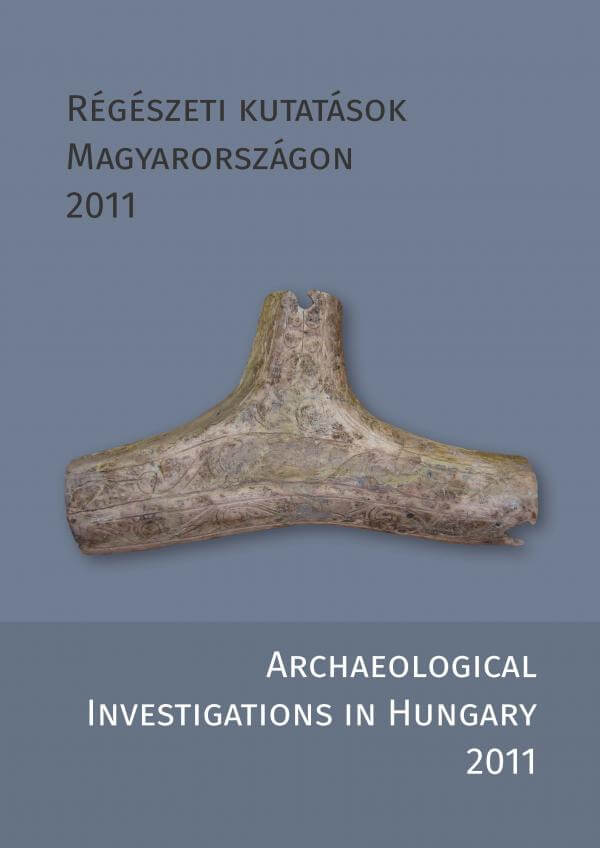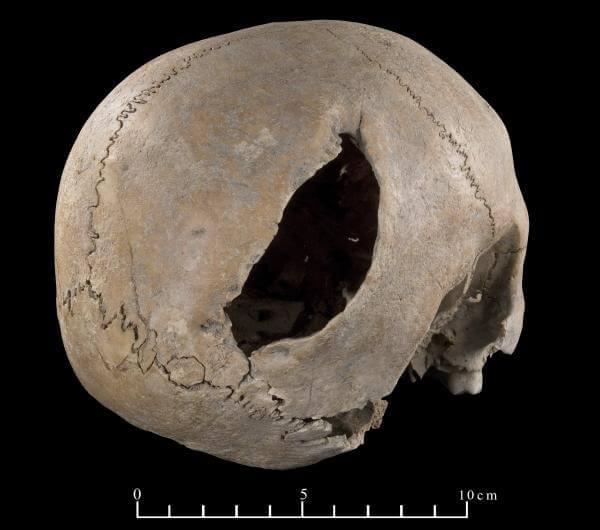News
Archaeological Investigations in Hungary online
We are pleased to announce that by the support of the Cabinet Office of the Prime Minister a new function was added to the Archaeology Database. From now on the published volumes of Archaeological Investigations in Hungary can be accessed online. The volumes are available in the Archaeological Investigations in Hungary menu and the site reports of the volumes are also available on the site datasheets.
Trepanation from Baracs, Hungary - Part 3
Surgical intervention has been frequently performed to treat cranial wounds, headaches, but also could be used to treat infections or tumours inside the cranium.
In the case of the child from Baracs, the cause of this type of surgery is not evident, but some features of the cut suggest that the aim of the trepanation was possibly to treat a blade wound. At the same time a small depression fracture due to a blow to the skull can be seen on the cranial surface near to the trepanation, which could be also a reason for a treatment of an intracranial injury.
Trepanation from Baracs, Hungary - Part 2
The secondary complication of the previously showed trepanation was an inflammation of the wound, which is signed by the bone structure changes at the edges of the opening toward the occipital bone. It can be clearly seen that a cavity was formed in the cranial wall as the result of the inflammation which opens onto the skull surface. The inflammation may have been partly caused by the fact that here, the piece of bone was broken and forced off, not cut.
Trepanation from Baracs, Hungary - Part 1
Trepanation is one of the most ancient surgical interventions, which is known from several cultures across the world; however, they can be different according to the applied technique. Trepanation cases are mostly from cemeteries of the Hungarian conquest period (9-10th c.) but there are examples from the previous Avar period as well. At Baracs-Szitány dűlő during the construction work of the M8 motorway in 2008 (site director: Kálmán Csaba Kiss), a grave was found which is an evidence for that this intervention was carried out even on children if it was necessary.
Written about us
http://www.ariadne-infrastructure.eu/News/Hungarian-archaeology-online
New online archaeology database for Hungary
As of the 28 May 2016, the Hungarian National Museum's Archaeology Database has been available online for researchers, field archaeologists, museum curators and members of the public...
Hungarian National Museum Archaeology Database is online
As of 28 May 2016 the Hungarian National Museum Archaeology Database is up and running. Thank you all for the comments and kind words.
We keep adding new sites and documentations to the catalogue and also encourage Hungarian colleagues and museums to join this unprecedented initiative.
If you have an archaeological project in Hungary, you are more than welcome to upload your site reports and share them with the ARIADNE community.
Hungarian National Museum Archaeology Database demonstration - 4 May 2016
The Hungarian National Museum Archaeology Database is almost ready. It is introduced to archaeologists on 4 May, 2016 in the Hungarian National Museum.
The database is part of the ARIADNE project supported by the 7th Framework Programme of the EU. If you want to browse the database no registration is needed, however, if you want to download site documentations you need to register.
The number of sites and documentations is continuously increasing, therefore check back often for new sites and updates.
Good browsing!







